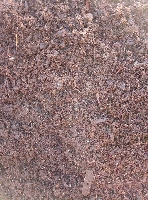Author: Sandra Dane, Pure Horticultural Research Station
Carbon (C) accumulation in the soil plays an important role in environmentally friendly management and in reducing greenhouse gases (GHGs). Through natural processes plants take C and store it in their biomass, thus removing it from the cycle. The challenge for farmers is to promote plant growth and learn not to release this fixed C mass back into the atmosphere. Partly this can be addressed by incorporating plant remains into the soil. For a better plant residue distribution in the soil, it is best, if the incorporated material contains both a dry part (material with a high dry matter content) and a green part (juicy plant parts). One of the best ways to bind C is to make a compost. In addition to being a good nutrient source to plants, compost also improves soil structure and increases its ability to hold water and nutrients.
Organic matter is made up of carbon compounds, so increasing the amount of organic matter in the soil also increases the amount of bound C that does not enter the atmosphere and does not increase GHG emissions. Any organic plant material can be composted, you just need to know the ratio of carbon to nitrogen to ensure quality compost. Quality compost is well decomposed, free of plant pathogens, seeds that have not retained their germination capacity and is pest-free. If the compost is not in good quality, there is a risk of increasing the number of weeds in the field. It is therefore preferable to compost all organic plant material that is not used but remains in the waste.
Composting is an organic process that converts organic matter, mainly waste, into humus-like material. These processes are carried out by micro-organisms (microscopic fungi and bacteria), macro-organisms (earthworms) and physico-chemical processes (e.g. mineralization). During composting, the compost mass is regularly dampened, stirred and, if necessary, limed to form a humus-like material - compost.
Compost is a mixture of organic residues or soil and organic residues that has undergone an aerobic composting process and is used for soil conditioning or as a fertilizer, including as a substrate for vegetable growing. It's a way for us to give back to the soil some of what we've harvested. So, you need to know how to make good quality compost. There are many opinions and methods, but there are basic principles that should be followed in its preparation. One of the biggest potential advantages of compost is its potential to replace both peat as a substrate and mineral fertilizers as a soil amendment.
A follow-up article will be available in a handbook on climate-friendly agricultural practices.
